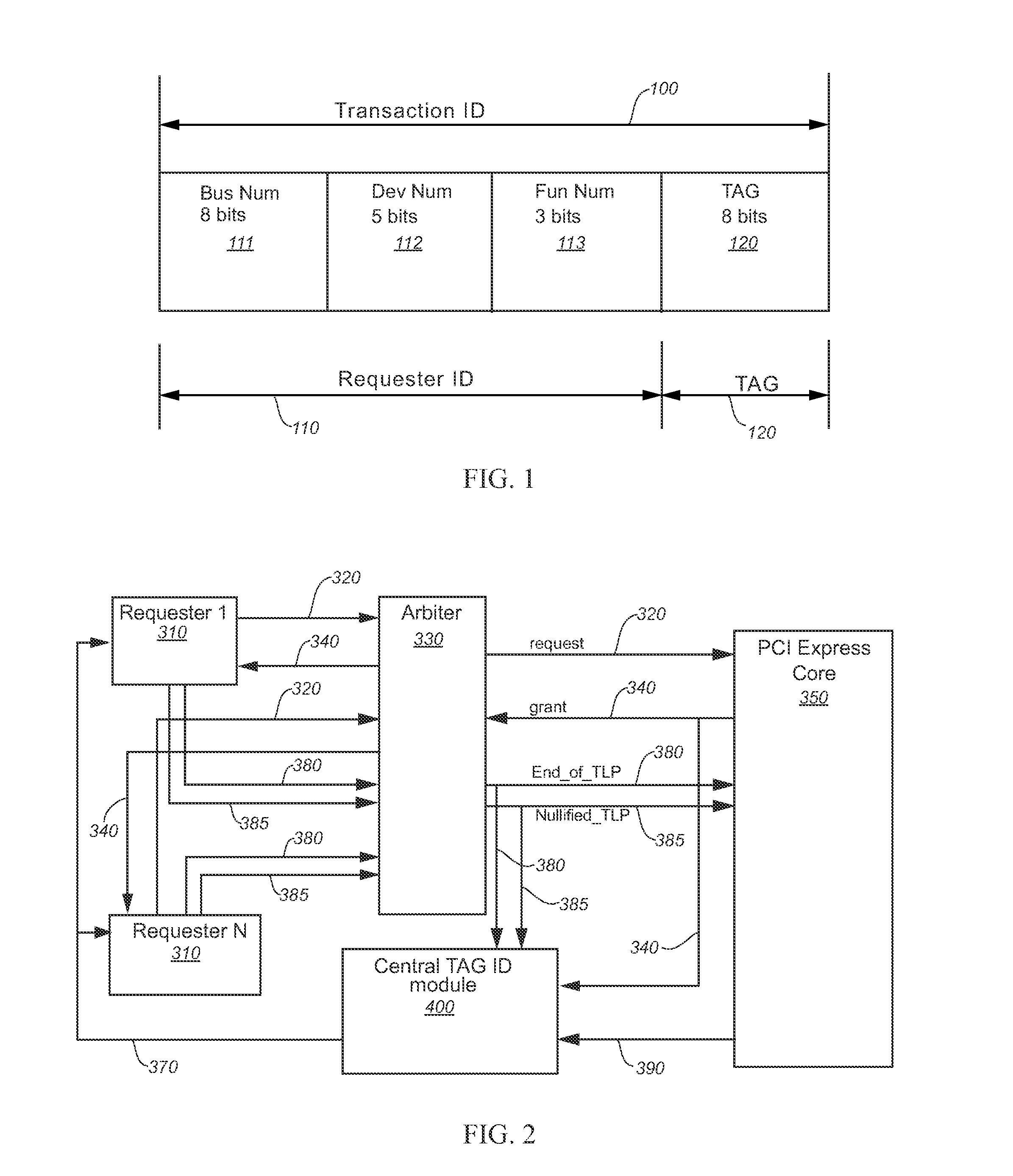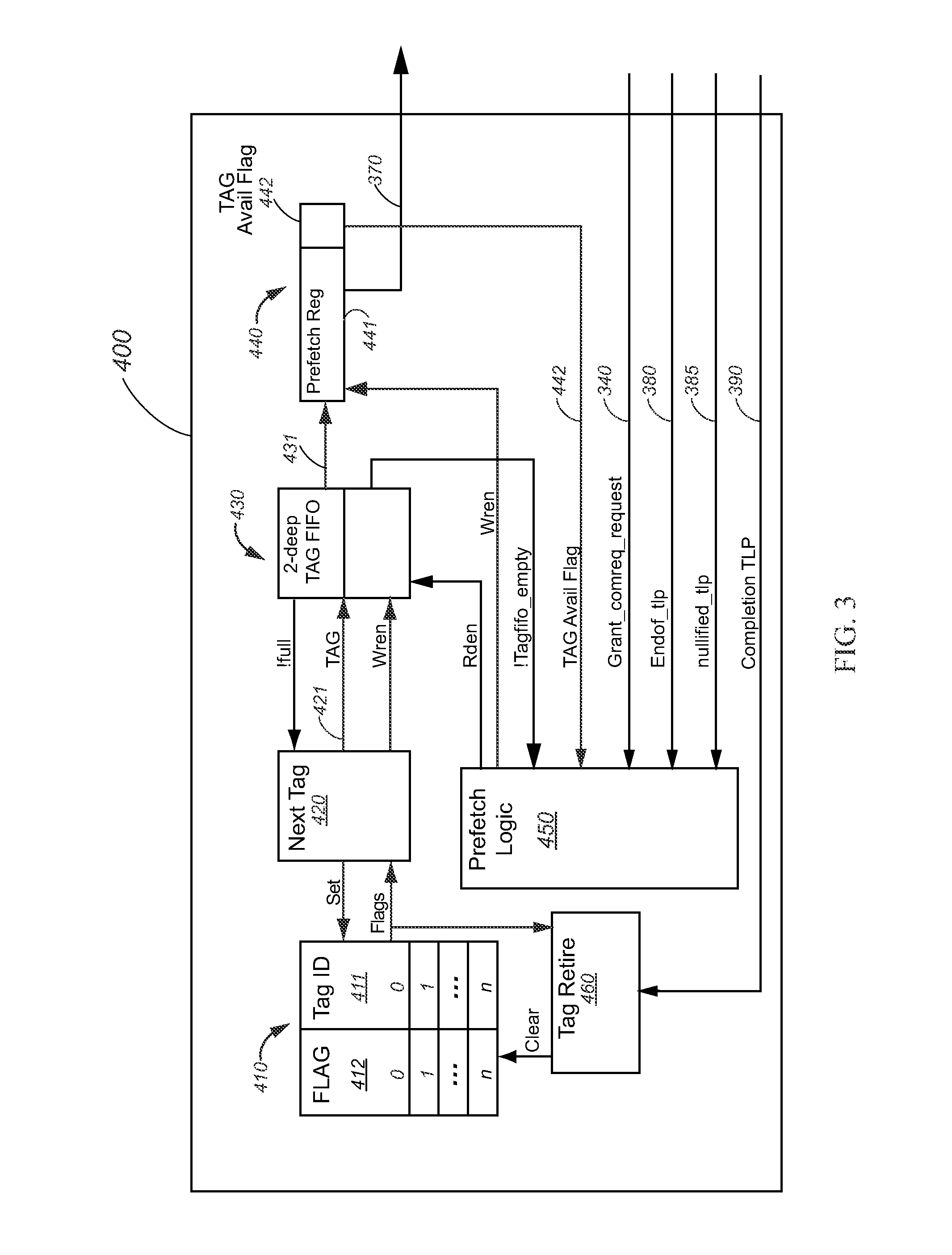Method and Apparatus for Generating Unique Identification Numbers for PCI Express Transactions with Substantially Increased Performance
a technology of unique identification number and pci express, applied in the field of pci express model of data transfer, can solve the problems of loss or mismatch of crucial data, multiple problems, and improper tracking of transactions, and achieve the effect of improving system performan
- Summary
- Abstract
- Description
- Claims
- Application Information
AI Technical Summary
Benefits of technology
Problems solved by technology
Method used
Image
Examples
Embodiment Construction
[0018] The invention relates to a system and method for generating unique TAG IDs in a PCI Express design, in a way that substantially improves performance and enables TAG IDs to be generated for back-to-back TLPs. The invention eliminates the problem of dead cycles in between back-to-back TLPs, which are ordinarily caused by TAG IDs being generated during the processing of the TLP, by generating up to three TAG IDs in advance of the processing.
[0019] As shown in FIG. 1, a global transaction ID 100 consists of a Requester ID 110 and a TAG 120. The Requester ID 110 consists of three fields: a Bus Number 111, a Device Number 112, and a Function Number 113, all of which function together to make any function in any device and bus unique. These three numbers cannot adequately make transactions unique, however, when a function sends multiple requests that are simultaneously waiting for completion at a given time. This is because the three fields have a limited set of numbers generated, ...
PUM
 Login to View More
Login to View More Abstract
Description
Claims
Application Information
 Login to View More
Login to View More - R&D
- Intellectual Property
- Life Sciences
- Materials
- Tech Scout
- Unparalleled Data Quality
- Higher Quality Content
- 60% Fewer Hallucinations
Browse by: Latest US Patents, China's latest patents, Technical Efficacy Thesaurus, Application Domain, Technology Topic, Popular Technical Reports.
© 2025 PatSnap. All rights reserved.Legal|Privacy policy|Modern Slavery Act Transparency Statement|Sitemap|About US| Contact US: help@patsnap.com



